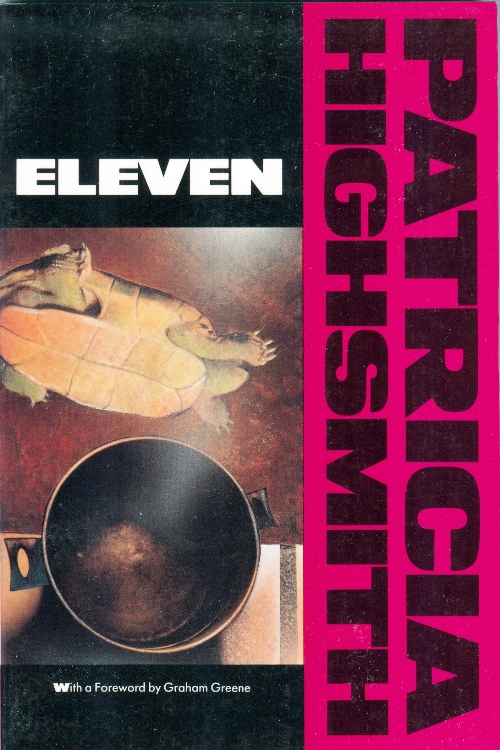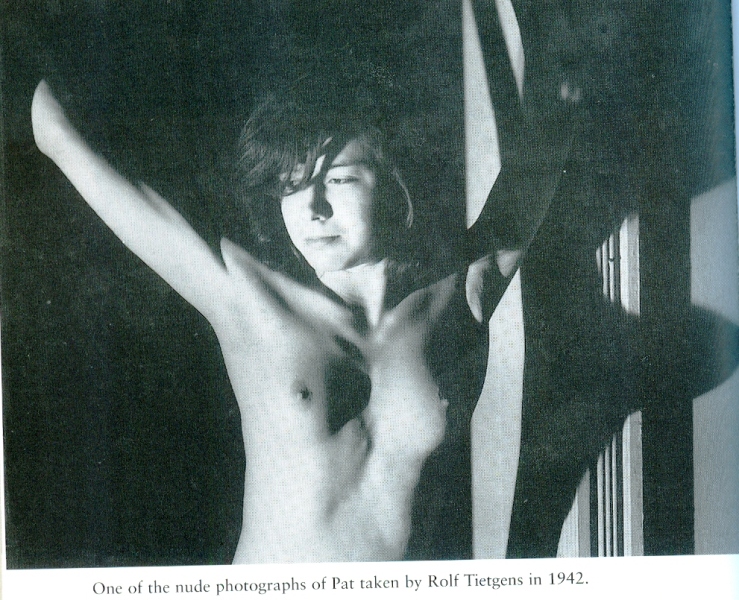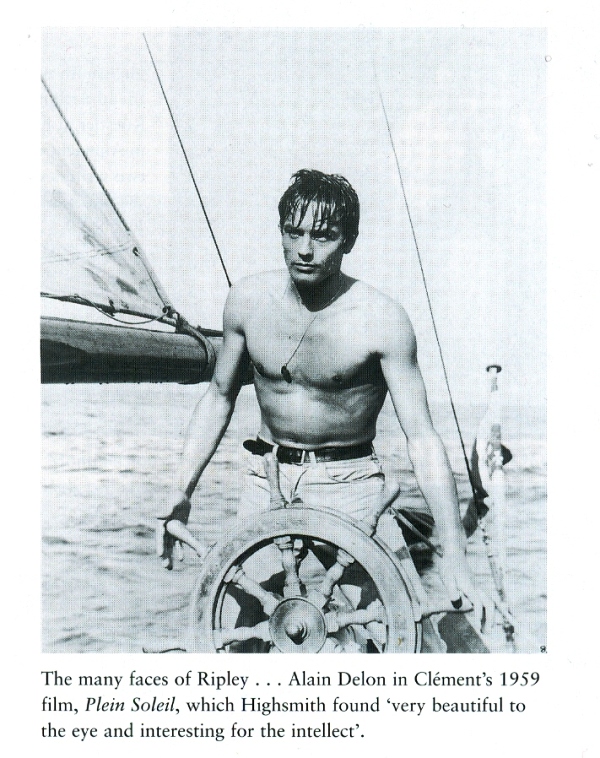|


Tác giả/tác
phẩm ảnh hưởng nặng nề lên Pat [Patricia Highsmith] là Dos/Tội ác và Hình Phạt.
Như… Sến, em gặp ông già rậm râu là mê
liền, năm em 13 tuổi!
Trong nhật
ký, em coi Dos, là "Thầy", và coi Tội
Ác là 1 cuốn tiểu thuyết
suspense, trinh thám nghẹt thở.
Thomas Mann phán, Tội Ác là
một trong những cuốn
tiểu thuyết trinh thám lớn lao nhất của mọi thời.
Cuốn trứ
danh của Pat, Những kẻ lạ trên tàu, Strangers
on a Train, là từ Tội Ác
mà ra.
Em phán: "Tôi có ý nghĩ của riêng tôi về nghệ thuật, và nó như vầy:
điều mà hầu
hết mọi người coi là kỳ quặc, thiếu tính phổ cập, fantastic, lacking in
universality, thì tôi coi là cực yếu tính, the utmost essence, của sự
thực."
Tzvetan Todorov, khi viết về sự quái dị trong văn chương, đã cho thấy,
bằng cách
nào tiểu thuyết trinh thám hiện đại đã thay thế truyện ma quỉ của quá
khứ, và
những nhận định của ông áp dụng rất OK với tiểu thuyết của Pat: “căn
cước gẫy vụn,
bể nát, những biên giới giữa cá nhân và môi trường chung quanh bị phá
vỡ, sự mù
mờ, lấp lửng giữa thực tại bên ngoài và ý thức bên trong”, đó là những
yếu tố
thiết yếu làm nền cho những đề tài quái dị.
GCC biết đến
Patricia Highsmith qua phim Plein Soleil, Alain Delon
đóng vai Mr. Ripley. Thời còn Sài Gòn. Còn đi học, hoặc mới
đi làm.
Sau đó, mò coi truyện.
Mua Eleven, do đọc bài giới thiệu của Grahm Greene.
Truyện trinh
thám của PH, theo GCC "khủng" hơn hết, so với các tác giả khác, đúng
như Greene viết, bà tạo ra 1 thế giới của riêng bà, mỗi lần chúng ta mò
vô, là
một lần thấy ơn ớn.
Trong cuốn tiểu sử của bà, Cái bóng
xinh đẹp, Beautiful shadow, người viết
trích dẫn 1 câu trong nhật ký của bà, và là 1 câu trích dẫn
Kierkegaard:
Mỗi cá
nhân con người thì có nhiều cái bóng tạo thành những nếp gấp, tất cả
những cái
bóng đó thì giống người đó, và thi thoảng, có 1 cái bèn chiếm luôn chỗ
của người
đó.
Nguyên văn câu tiếng Anh, khác 1 tí, so với câu của GCC:
"The
individual has manifold shadows, all of which resemble him, and from
time to
time have equal claim to be the man himself."
Kierkegaard,
quoted in Highsmith’s 1949 journal
Miss
Highsmith is a crime novelist whose books one can reread many times.
There are
very few of whom one can say that. She is a writer who has created a
world of
her own - a world claustrophobic and irrational which we enter each
time with a
sense of personal danger, with the head half turned over the shoulder,
even
with a certain reluctance, for these are cruel pleasures we are going
to
experience, until somewhere about the third chapter the frontier is
closed
behind us, we cannot retreat, we are doomed to live till the story's
end with
another of her long series of wanted men.
GG
Foreword
by
Grallam
Greene
Miss
Highsmith is a crime novelist whose books one can reread many times.
There are
very few of whom one can say that. She is a writer who has created a
world of
her own - a world claustrophobic and irrational which we enter each
time with a
sense of personal danger, with the head half turned over the shoulder,
even
with a certain reluctance, for these are cruel pleasures we are going
to
experience, until somewhere about the third chapter the frontier is
closed
behind us, we cannot retreat, we are doomed to live till the story's
end with
another of her long series of wanted men.
It makes the
tension worse that we are never sure whether even the worst of them,
like the
talented Mr Ripley, won't get away with it or that the relatively
innocent
won't suffer like the blunderer Walter on the relatively guilty escape
altogether like Sydney Bartleby in A. Suspension of Mercy. This is a
world without
moral endings. It has nothing in common with the heroic world of her
peers,
Hammett and Chandler, and her detectives (sometimes monsters of cruelty
like
the American Lieutenant Corby of The Blunderer or dull sympathetic
rational characters
like the British Inspector Brockway) have nothing in common with the
romantic
and disillusioned private eyes who will always, we know, triumph
finally over
evil and see that justice is done, even though they may have to send a
mistress
to the chair.
Nothing is
certain when we have crossed this frontier.
It is not the world as we once believed we knew it, but it is
frighteningly
more real to us than the house next door. Actions arc sudden and
impromptu and
the motives sometimes so inexplicable that we simply have to accept
them on
trust. I believe because it is impossible. Her characters are
irrational, and
they leap to life in their very lack of reason; suddenly we realize how
unbelievably
rational most fictional characters are as they lead their lives from A
to Z,
like commuters always taking the same train. The
motives of these characters are never inexplicable because they are so
drearily
obvious. The characters are as Hat as a mathematical symbol. We
accepted them
as real once, but when we look back at them from Miss Highsmith's side
of the frontier,
we realize that our world was not really as rational as all that.
Suddenly with
a sense of fear we think, 'Perhaps I really belong here,' and going out
into
the familiar street we pass with a
shiver of apprehension the offices of the American Express, the centre,
for so
many of Miss Highsmith's dubious men, of their rootless European
experience,
where letters are to be picked up (though the name on the envelope is
probably false)
and travellers' cheques are to be cashed (with a forged signature) .
Miss
Highsmith's short stories do not let us down, though we may be able
sometimes
to brush them off more easily because of their brevity. We haven't
lived with
them long enough to be totally absorbed. Miss Highsmith is the poet of
apprehension
rather than fear. Fear after a time, as we all learned in the blitz, is
narcotic, it can lull one by fatigue into sleep, but apprehension nags
at the
nerves gently and inescapably. We have to learn to live with it. Miss
Highsmith's finest novel to my mind is The Tremor of Forgery, and if I
were to be
asked what it is about I would reply, 'Apprehension'.
In her short
stories Miss
Highsmith has naturally to adopt a different method. She is after the
quick
kill rather than the slow encirclement of the reader, and how admirably
and
with what field-craft she hunts us down. Some of these stories were
written
twenty years ago, before her first novel, Strangers
on a Train, but we have no sense
that she is
learning her craft by false starts, by trial and error. 'The Heroine',
published nearly a quarter of a century ago, is as much a study of
apprehension
as her last novel. We can feel how dangerous (and irrational) the young
nurse
is from her first interview. We want to cry to the parents, 'Get rid of
her
before it's too late'.
My own
favourite in this collection is the story 'When the Fleet Was In at
Mobile'
with the moving horror of its close here is Miss Highsmith at her
claustrophobic best. 'The Terrapin', a late Highsmith, is a cruel story
of
childhood which can bear comparison with Saki's masterpiece, 'Sredni
Vashtar',
and for pure physical horror, which is an emotion rarely evoked by Miss
Highsmith, 'The Snail-Watcher' would be hard to beat.
Mr Knoppert has
the same attitude to his snails as Miss Highsmith to human beings. He
watches
them with the same emotionless curiosity as Miss Highsmith watches the
talented
Mr Ripley:
Mr Knoppert
had wandered into the kitchen one evening for a bite of something
before
dinner, and had happened to notice that a couple of snails in the china
bowl on
the draining board were behaving very oddly. Standing more or less on
their
tails, they were weaving before each other for all the world like a
pair of
snakes hypnotized by a flute player. A moment later, their faces came
together
in a kiss of voluptuous intensity. Mr Knoppert bent closer and studied
them from all angles. Something else was happening: a protuberance like
an ear
was appearing on the right side of the head of both snails. His
instinct told
him that he was watching a sexual activity of some sort.
Graham Greene
|





